



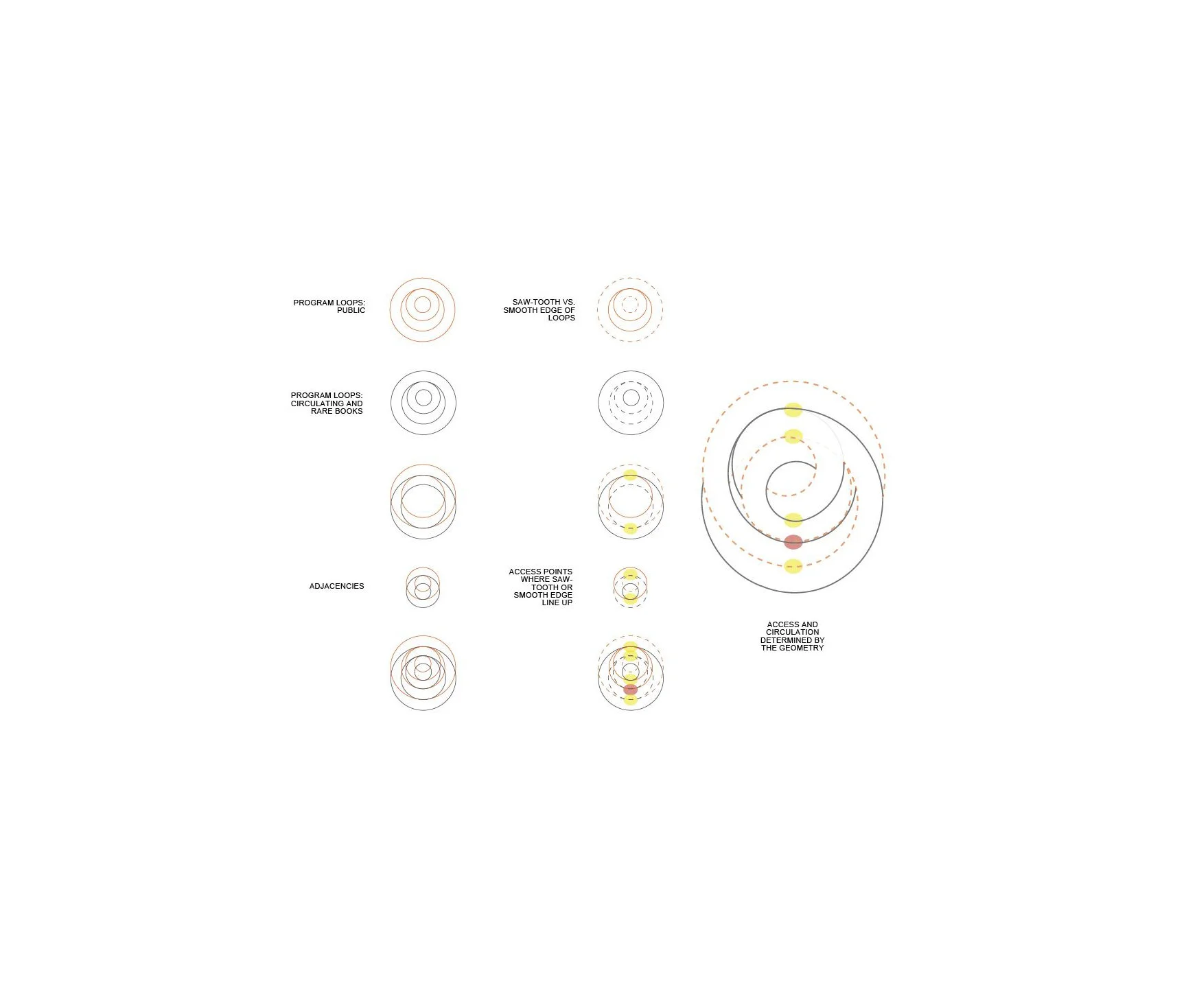
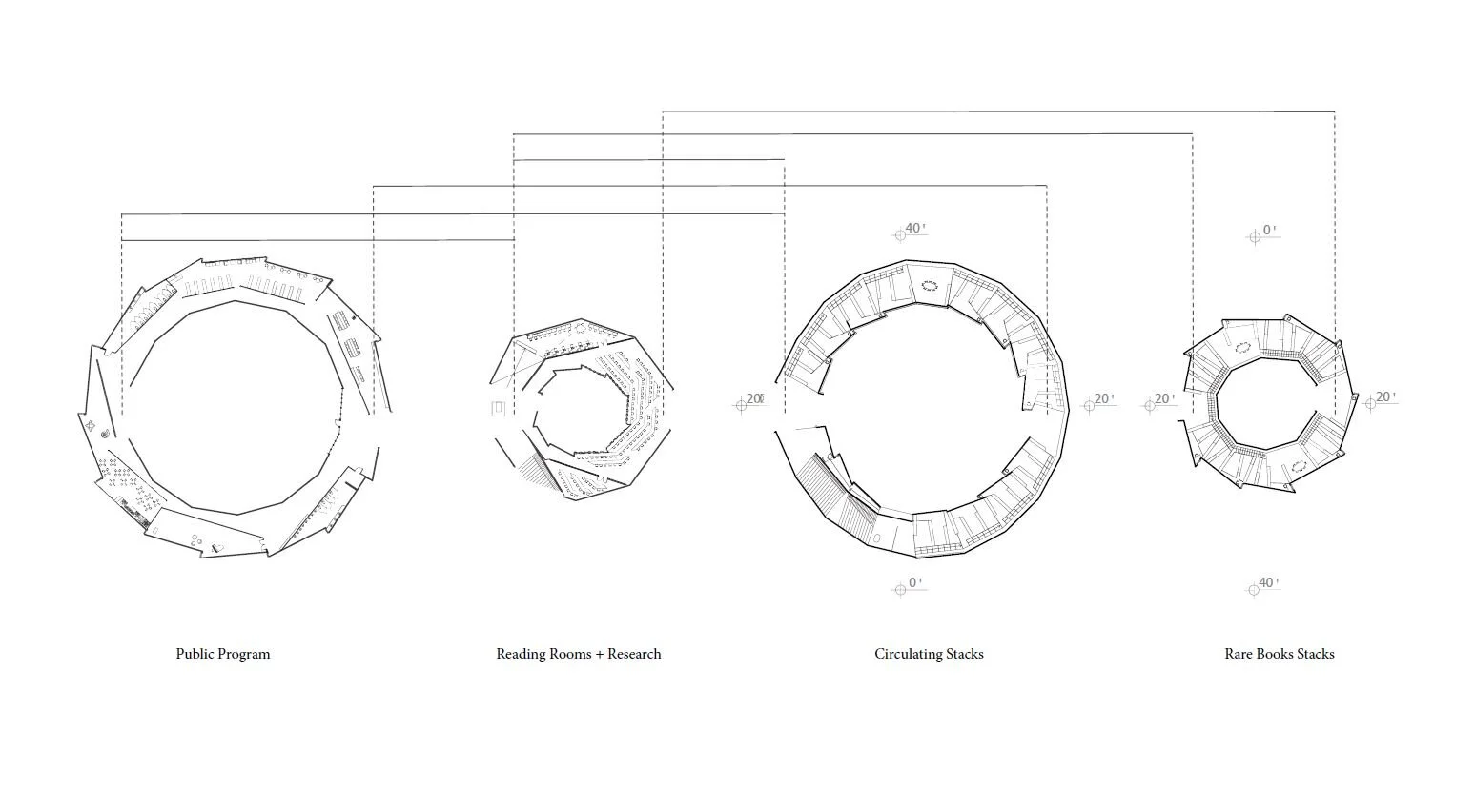



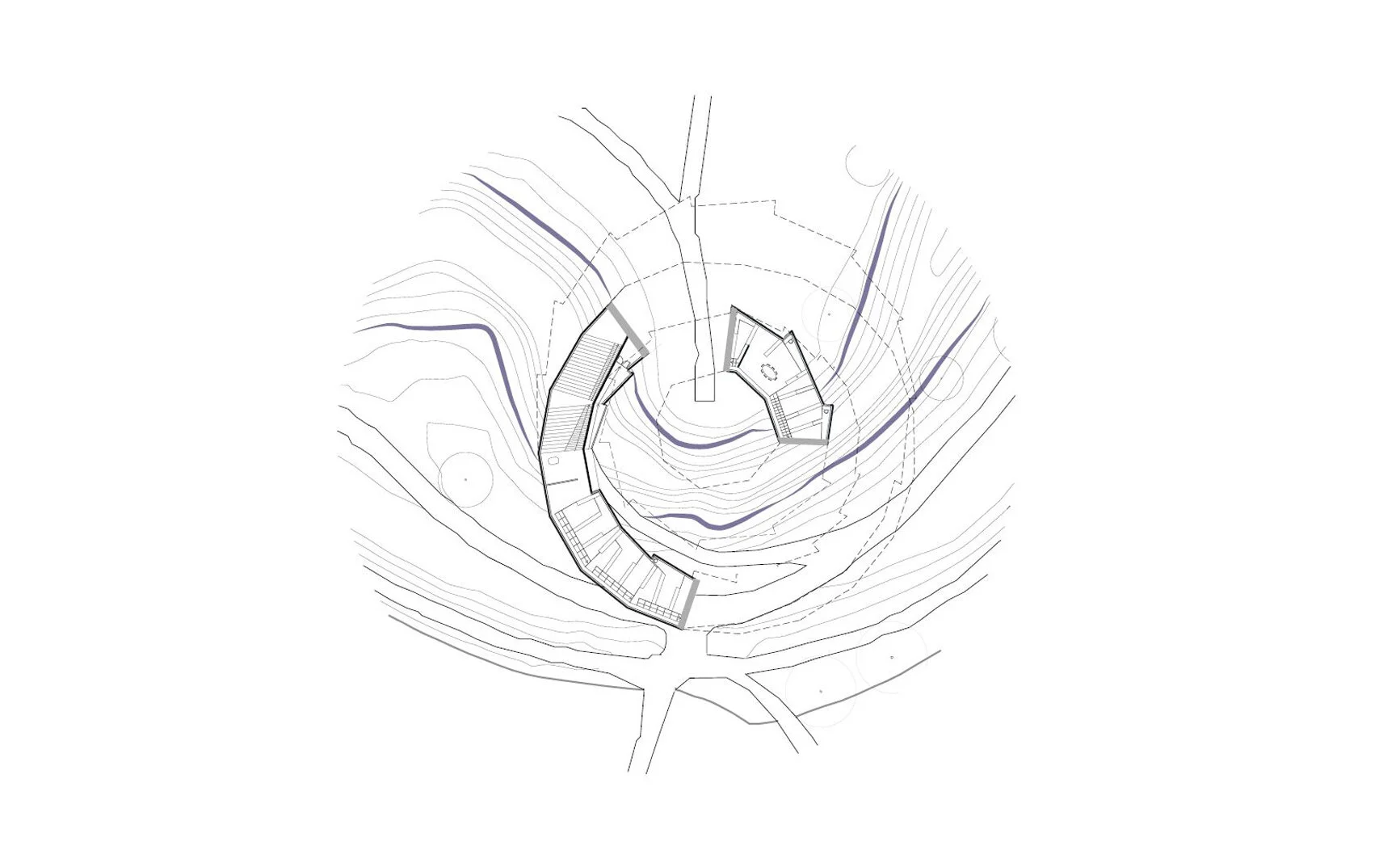

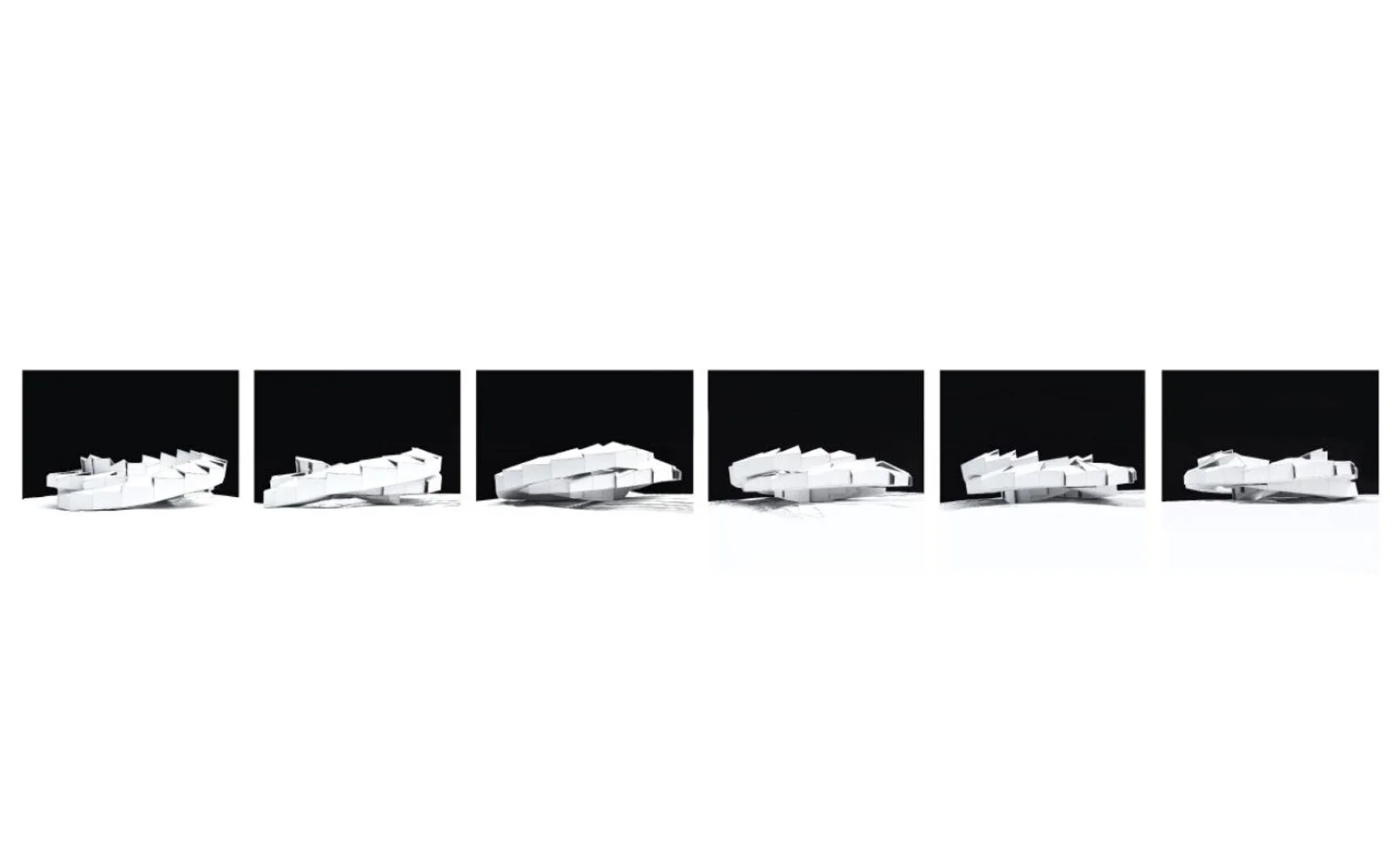

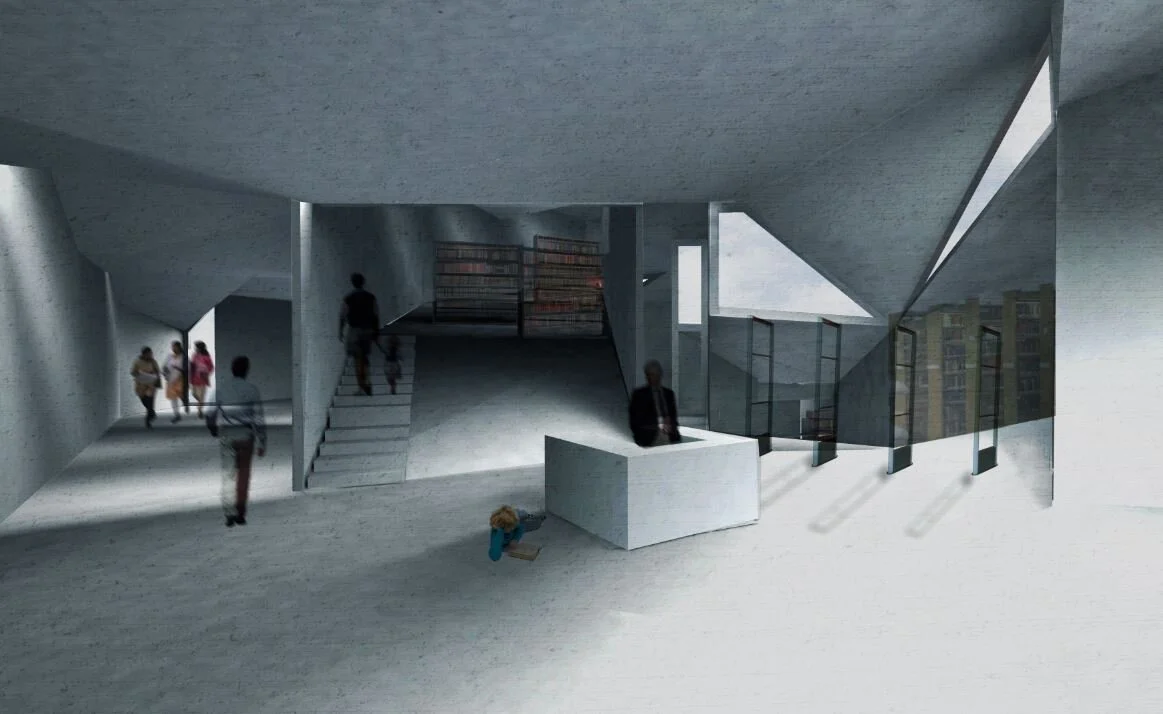

G é o m é t r i q u e
MFA RARE BOOKS LIBRARYSpring 2015Instructed by Jeffry BurchardNominated for publication and exhibition in GSD Platform 8This project involves the creation of a rare books library sited within a park. Its intention is to define the relationship between site, building form, and program. This exercise consolidates Boston’s Museum of Fine Arts Library into a single building, located along the cultural corridor of the Fenway, Emerald Necklace designed by Frederick Law Olmsted. If one can make a case for how architecture should fit within the bucolic landscape, perhaps a case could also be made for how a building should not fit in the park. This building then becomes an object in the park, completely insular and isolated from the natural landscape. Naturally, a circular form lent itself to the task at hand of creating containability within the environment.
The organization of program is characterized by four loops, two of which offset the other two by half (for smaller programs). The two larger loops contain the public programs and the circulating stacks while the smaller loops contain the rare book stacks and the research/study areas. The two loops containing the stacks are rotated in such a way that they are the only parts that make contact with the ground resonating as metaphor for knowledge as foundation. Due to the range of types of program (noisy to silent, busy to quiet), circulation became a cause for tension within the building’s organization. Consequently, moments of access between loops is only granted where the loops become coplanar. Due to the different lighting requirements for the programs, and the security required for the rare books stacks, the architectural unit of the bay was used to curate accessibility and lighting.
Each loop is composed of bays that have both a continuous exterior surface to one side and a fragmented, saw-toothed surface to the other exterior side, which allows for diffused lighting and small pockets of space for study carrels. Where these edges of sameness align with each other, like zippers, one is allowed to circulate between loops. Due to the organizational offsetting and half-scaling of the loops, these access points happen at each coplanar intersection of the loops except at the most critical adjacency: between the very public program and the very secure rare books stacks. Though contiguous, the architecture of the unit creates different conditions that mediate between programmatic tension and the architecture’s overall situating in the park